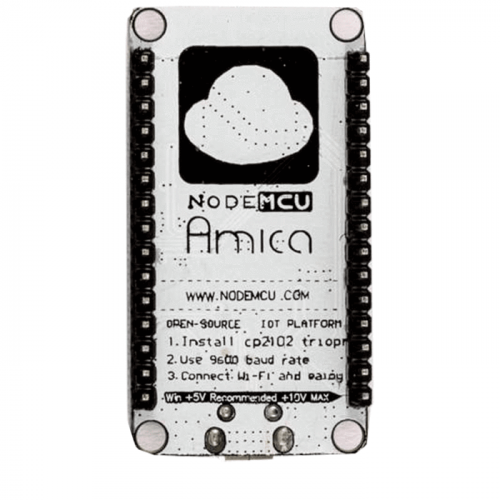
- Esp8266 firmware options driver#
- Esp8266 firmware options software#
Esp8266 firmware options driver#
RTOS version is compatible with non-OS SDK in the Wi-Fi interface, smart config interfaces, Sniffer related interfaces, system interface, timer interface, FOTA interfaces and peripheral driver interface, but does not support the AT implementation.įor my purposes I naturally went with the RTOS SDK. RTOS version of the SDK introduces cJSON library, use the library functions to more easily parse JSON packets. Esp8266 firmware options software#
Users can directly use the socket API to develop software applications your code can also be directly compiled to run standard applications on other platforms Socket, effectively reducing the cost of learning platform switching.
RTOS SDK version of the network operating interface is a standard lwIP API, while providing a package which enables BSD Socket APIsocket interface. For the specifics of interface methods, refer to freeRTOS official website instructions or USING THE FREERTOS REAL TIME KERNEL – A Practical Guide introduction. You can use standard interfaces to freeRTOS resource management, recycling operations, execution delay, inter-task messaging and synchronization, task-oriented process design. RTOS version SDK uses the freeRTOS system, a multi-tasking OS. The Non-OS SDK uses the espconn network interface the user needs to develop their software according to the usage rules of the espconn interface. The Non-OS SDK uses timers and callbacks as the main way to perform the various functions – nested events, functions triggered by certain conditions. The main differences are (taken from here): Non-OS SDK We have two official firmwares to choose from: Non-OS SDK or RTOS SDK. But hey, if we’re going to hack the firmware, we better code a new sniffer, right? Here goes. Oh dear, I guess some firmware hacking are heading my way. I quickly fixed it (uploaded here) and then encountered a 2nd problem which was not as easy to fix – there is a 128 bytes limitation on the SDK for packet size. I started with grabbing the esp8266_pcap_serial from ArduinoPcap just to find out it lacks the structs to properly stream the buffer to Wireshark. While (WiFi.waitForConnectResult() != WL_CONNECTED) else if(_authenticated & upload.As the title suggests, I needed to sniff some 802.11 packets, but this time using an ESP8266 (actually, a Wemos D1 mini Lite, which features ESP8285, but any ESP-based device should work). To upload through terminal you can use: curl -F esp8266-webupdate.local/update Partitore di tensione (voltage divider): calcolatore e applicazioni. Convertitore online da immagini a byte array (cpp, Arduino).  Convertitore online da HEX array a file. Convertitore online: da File a (cpp) gzip byte array. Ebyte LoRa E32 per Arduino, esp32 o esp8266 : WOR (wake on radio) del microcontrollore e uno shield per Arduino – Part 6.
Convertitore online da HEX array a file. Convertitore online: da File a (cpp) gzip byte array. Ebyte LoRa E32 per Arduino, esp32 o esp8266 : WOR (wake on radio) del microcontrollore e uno shield per Arduino – Part 6.  Ebyte LoRa E32 per Arduino, esp32 o esp8266: WOR (wake on radio) anche il microcontrollore ed il nuovo WeMos D1 shield – Parte 7. Ebyte LoRa E32 per Arduino, esp32 o esp8266 : WOR (wake on radio) del microcontrollore e lo shield per esp32 – 8. Centralina Web per inverter ABB (Power One) Aurora: collegamenti e saldatura del PCB – 8. Base stampata in 3D per il Ciclop 3D Scanner. Centralina Web per inverter ABB (Power One) Aurora: scatola stampata in 3d per completare – 10. esp32-wroom-32 esp32-s scheda di programmazione ed adattatore per breadboard. esp-12 esp-07 (esp8266) scheda di programmazione ed adattatore per breadboard. Versione migliorata dell’asse Z per il Cyclone PCB Factory. Ingranaggi a spina di pesce per il Cyclone PCB Factory. Sistema di supporto modulare stampato in 3D: alloggiamento esp32-cam – 2. Sistema di supporto modulare stampato in 3D: elementi di base – 1. Sistema modulare di sostegno stampato in 3D. FlyingBear Ghost 5 enclosure: copertura superiore. FlyingBear Ghost 5 enclosure: copertura/sportello frontale. Guida a DynamoDB con JavaScript SDK v2 e v3. Come interfacciare Arduino, esp8266 o esp32 alla seriale RS-485.
Ebyte LoRa E32 per Arduino, esp32 o esp8266: WOR (wake on radio) anche il microcontrollore ed il nuovo WeMos D1 shield – Parte 7. Ebyte LoRa E32 per Arduino, esp32 o esp8266 : WOR (wake on radio) del microcontrollore e lo shield per esp32 – 8. Centralina Web per inverter ABB (Power One) Aurora: collegamenti e saldatura del PCB – 8. Base stampata in 3D per il Ciclop 3D Scanner. Centralina Web per inverter ABB (Power One) Aurora: scatola stampata in 3d per completare – 10. esp32-wroom-32 esp32-s scheda di programmazione ed adattatore per breadboard. esp-12 esp-07 (esp8266) scheda di programmazione ed adattatore per breadboard. Versione migliorata dell’asse Z per il Cyclone PCB Factory. Ingranaggi a spina di pesce per il Cyclone PCB Factory. Sistema di supporto modulare stampato in 3D: alloggiamento esp32-cam – 2. Sistema di supporto modulare stampato in 3D: elementi di base – 1. Sistema modulare di sostegno stampato in 3D. FlyingBear Ghost 5 enclosure: copertura superiore. FlyingBear Ghost 5 enclosure: copertura/sportello frontale. Guida a DynamoDB con JavaScript SDK v2 e v3. Come interfacciare Arduino, esp8266 o esp32 alla seriale RS-485. 

Come usare la scheda SD con esp8266 e Arduino – 1. Gestire file JSON con Arduino, esp32 ed esp8266. Come creare un Server Web con l’esp8266 e l’esp32. Come creare un REST server con esp8266 o esp32. Come riutilizzare motori passo passo a 6 e 4 fili per i tuoi progetti. Libreria Inverter ABB Aurora PV per Arduino, esp8266 and esp32. Inviare email con allegati (libreria v2.x). Inviare email con esp8266 (Libreria v1.x deprecata). DHT12: un sensore i2c di umidità e temperatura veramente economico. PCF8575: un expander i2c I/O digitale a 16 bit. DHT12 temperatura ed umidità su interfaccia Web protetta con esp8266 o esp32. Centralina Monitoraggio Web per inverter ABB Aurora (ex Power One ora Fimer). Scheda di programmazione ATtiny (ArduinoUNO come ISP). Scheda di programmazione per modulo ESP-01.








 0 kommentar(er)
0 kommentar(er)
